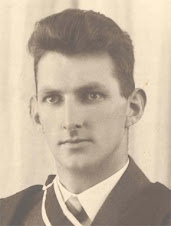When I arrived in Peru in 1927 the evangelical cause was only 36 years old and many of the earliest converts and workers were still active. Prior to my arrival comity arrangements had been arrived at whereby the Evangelical Union of South America occupied the southern part of Peru, the Methodist Episcopal Church of America the central highland region, the Free Church of Scotland Cajamarca and the territory to the east, and the Church of the Nazarene and the
 Holiness Church of California the northern coastal region. The recently arrived Assemblies of God were allotted the Callejon de Huaylas which is a large valley between the Black Range and the White Range which includes the highest peak in Peru, Mt Huascaran, which is 22,200 feet high. The capital city of Lima was regarded as free for all.
Holiness Church of California the northern coastal region. The recently arrived Assemblies of God were allotted the Callejon de Huaylas which is a large valley between the Black Range and the White Range which includes the highest peak in Peru, Mt Huascaran, which is 22,200 feet high. The capital city of Lima was regarded as free for all.As for the changes I have witnessed in the attitude of the countries of the Western world toward missionary work in Latin America I think the most notable would be the increasing liberalism in theology of the Methodists and Presbyterians of North America, the adoption by these churches of the recommendations of the Jerusalem International Missionary Conference of 1928, the proliferation of small denominational and faith missiones (sic) since that time, and finally the attempts of the World Council of Churches to infiltrate the evangelical churches, especially during the 60s.
Following the Jerusalem Conference of 1928, which was a victory for Humanism, a commission of laymen visited the principal mission fields and published its findings and recommendations in a book entitled “Rethinking Missions”. Its principal recommendations were: 1) Emphasize the Social Gospel; 2) Remove Evangelism from Schools and Hospitals; 3) Recruit only liberal candidates; 4) Regard non-Christian religions as fellow seekers; and 5) Form one central Board of Foreign Missions in the U.S.A to ensure the carrying out of this policy.
In the missions which subscribed to this policy the result was stagnation. On the other hand the proliferation of conservative missions resulted in the spread of Biblical evangelism throughout the continent so that it would not be far wrong to estimate the present strength of his segment at 90% of the whole Protestant population.
Especially during the 60’s the WCC has endeavored to infiltrate these groups through agencies such as the Student Christian Movement, Church and Society and the Committee for Evangelical Unity in Latin America. These agencies have been welcomed by the mainstream denominations, which constitute an insignificant minority but so far they have made little headway among Biblical evangelicals.





No comments:
Post a Comment